Fayard Nicholas (of the legendary Nicholas Brothers dancing duo) said about dancer Eleanor Powell (dubbed the “Queen of tap”), “Eleanor Powell was one of the greatest, period, bar none. Not only one of the greatest women- one of the greatest, period.” High praise from another dancing deity.

I’ve been revisiting her dance in films after experiencing the gorgeous Warner Archive Blu-ray of Broadway Melody of 1940. Watching her dancing with Fred Astaire to Cole Porter’s “Begin the Beguine” totally fried my brain this time around. To see those two go toe-to-toe is just exhilarating. In the film That’s Entertainment!, Frank Sinatra puts it best, “You know, you can wait around and hope, but I tell ya, you’ll never see the likes of this again.”

What’s startling is that she really only made 14 films before walking away from it to raise her son Peter with husband Glenn Ford. They were married for 16 years and afterwards, when her son was older, she revitalized her career again in Las Vegas. During the AFI tribute to Fred Astaire when Eleanor Powell glides on stage the audience leaps to their feet in well-deserved applause. There’s just something so joyful and unique about her dancing. Almost akin to a jazz musician searching for the right riff, her feet seem to move with a mind of their own, complimenting each other but also exploring, playfully teasing and testing, then coming in hard for a grand finish. It’s unearthly in the best possible sense.
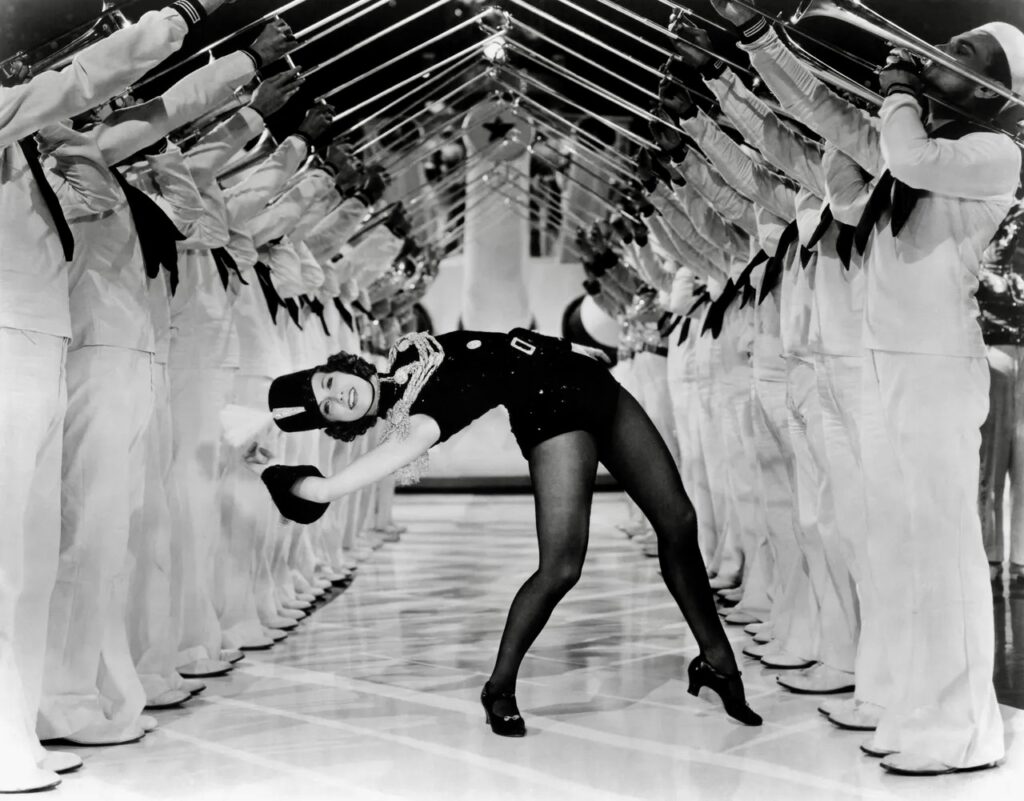
Now, I’ve seen most of her key films, but I decided to make it my mission to fill in the blanks and try and watch as many in her filmography as I could. And each one filled me with a kind of rapture that helped erase the depressing news of the day. That’s the advantage of having a personal library of films- when you’re blue you can pull them off the shelf and immediately revel in their pleasures. Good luck replicating that effect “streaming.”

Born in Springfield, Massachusetts, Eleanor’s mother enrolled her in dance lessons when she was 11 and quickly realized the girl’s potential. Powell also studied ballet, and more importantly, acrobatics- which really informed her work. She performed at a variety of venues before she and her mother moved to New York City and she began to get gigs on the vaudeville circuit. She even danced with Bill “Bojangles” Robinson. At 17 she appeared on Broadway in several musicals which led to her appearances on film.
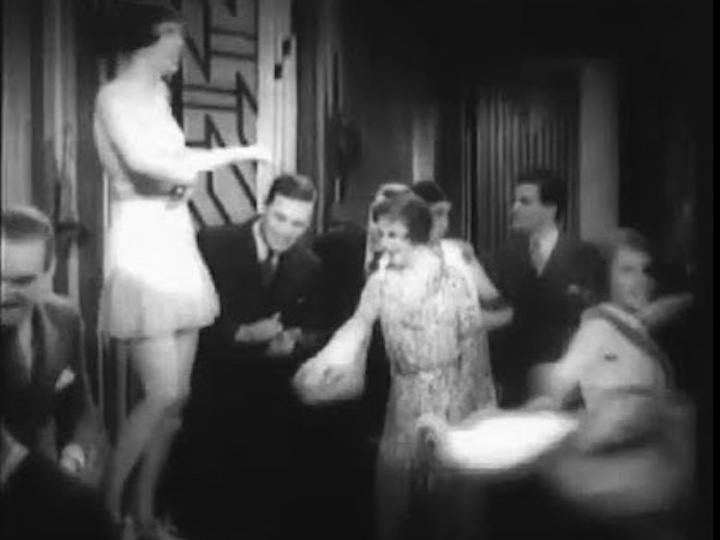
Queen High (1930) was her unbilled first film, and, sporting a Louise Brooks bob, she is lifted on top of a table and goes into a spirited tap dance during the number “Brother, Just Laugh It Off,” in front of the Wizard of Oz himself- actor Frank Morgan.

George White’s 1935 Scandals (1935) Alice Faye and James Dunn play two aspiring singers who are catapulted to stardom by Broadway producer George White (played by himself). Eleanor Powell has a small role as a femme fatale hoofer who lures James Dunn’s character away from the show. But she does get to do an impressive dance number at a nightclub.

Eleanor Powell was resistant to offers of a contract by MGM, but, thankfully (for us) she eventually relented and accepted the deal. Broadway Melody of 1936 (1935) is an astonishing debut for Powell. Moss Hart was one of the screenwriters, Roy Del Ruth was director, and there’s a fun supporting cast. Handsome Robert Taylor plays Robert Gordon, a big Broadway producer and Jack Benny is his nemesis, as a headline-seeking journalist. Eleanor Powell plays Irene Foster, an aspiring performer, who arrives in Manhattan and heads for Robert Gordon’s office (they were sweethearts in high school). At first, he doesn’t recognize her. Buddy Ebsen plays a hoofer who dances with his sister (Vilma Ebsen) and lives in Irene’s building. Irene is convinced to impersonate a mysterious French singing sensation and hijinks ensue. But we are treated to inspired dancing sequences with a staggering finale with Powell– decked out in a spangled tuxedo and top hat- tap dancing to “Broadway Rhythm.” The film captures Powell’s naturalness on camera, her innate loveliness, and her extraordinary dancing skills. The score by Nacio Herb Brown and Arthur Freed includes memorable numbers like “I’ve Got a Feelin’ You’re Foolin,’” “You Are My Lucky Star,” and “All I Do is Dream of You.” Aside from the annoying comic interludes with Robert Wildhack demonstrating his encyclopedic knowledge of snoring, the movie is great fun, and Eleanor just dazzles.

Born to Dance (1936) Jimmy Stewart sings! Stewart plays Ted Barker, a naval office on leave in Manhattan who falls for aspiring dancer Nora Paige (Powell). Filled with Cole Porter standards, there’s a lovely interlude in the park where Stewart (in his actual voice) sings “You’d Be So Easy to Love,” to Eleanor (whose singing voice was dubbed by Marjorie Lane). But Eleanor gets to kick up her heels during a dance rehearsal where she pinch-hits for temperamental star Lucy James (Virginia Bruce), and in the finale where she is decked out in a majorette outfit and goes into a mind-altering tap dance to “Swingin’ the Jinx Away.” There’s wonderful screen chemistry on screen with Stewart’s lanky, shambling sweetness and Eleanor Powell’s grace and loveliness. Una Merkel is a hoot as Jenny Saks, the wise-cracking hotel concierge and the music is heavenly, including an exquisite sequence where Virginia Bruce (as Lucy) sings to Jimmy Stewart, “I’ve Got You Under My Skin.”
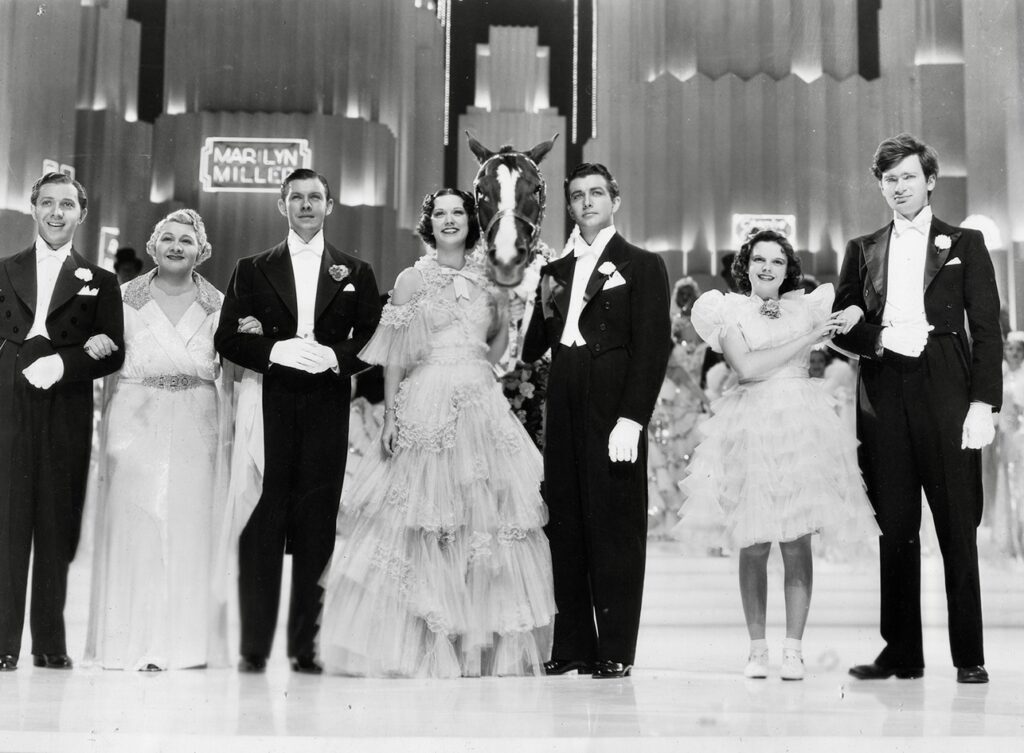
Broadway Melody of 1938 (1937) Eleanor Powell plays Sally Lee, a stowaway aboard a ship carrying a race horse she has a strong connection to. George Murphy and Buddy Ebsen play Sam and Peter, two song-and-dance men hired to care for the horse. Dashing Robert Taylor plays a Broadway agent who recognizes Sally’s dance and singing potential and falls for her. There’s a side story concerning a rooming house filled with eccentric out-of-work performers run by Alice (played by brassy, bigger-than-life Sophie Tucker). A teenage Judy Garland soulfully sings (to a photo of Clark Gable) “You Made Me Love You (I Didn’t Want To Do It),” and that scene catapulted her to stardom. George Murphy and Eleanor Powell exuberantly dance to “I’m Feeling Like a Million,” but her finale, decked out in a men’s tuxedo, “Got a Pair of New Shoes,” is an absolute knockout.

Rosalie (1937) Nelson Eddy (without Jeanette MacDonald) plays Dick Thorpe, a West Point cadet (and football star) who meets the lovely Rosalie (Eleanor Powell) who takes an instant dislike to him. “He’s conceited.” But Dick and his buddy Bill (Ray Bolger) travel to Vassar college and Dick serenades Rosalie under her dorm window with Cole Porter’s “Rosalie.” Unfortunately, Rosalie is secretly the Princess of “Romanza” and is reluctantly called back to her country to marry Prince Paul (Tom Rutherford), who is really in love with Countess Brenda (Ilona Massey). The King (Frank Morgan) would rather play with a ventriloquist dummy and yearns to abdicate the throne. The hilarious Edna May Oliver plays the imperious Queen. Dick flies over the ocean by plane to Romanza for the “Feast Day of the Saint” and Rosalie (Powell), dressed in a “Pierrette” costume, goes into a fiery tap dance atop giant drums. After a revolution, the royal family flees to America and Rosalie dons a cadet outfit (and does an energetic tap dance before the troops) before happily reuniting with her true love. Nelson Eddy’s thundering baritone comes to good use singing Cole Porter’s “In the Still of the Night,” to Rosalie. A silly, overlong, but satisfying delight. Much of the success is because of Eleanor Powell’s performance, which is bright, playful, sardonic and infectiously funny.

Honolulu (1939) Robert Young in a double role- one as big movie star Brooks Mason, the other as Honolulu pineapple plantation owner George Smith. They decide to switch lives for a while. The actor is tired of getting besieged by fans. Eleanor Powell plays Dorothy March, a performer who meets him aboard the ship traveling to the South Seas. Gracie Allen plays her dizzy friend Millie. On deck, she goes into a passionate tap dance (with a jump rope) to the song “Honolulu” and meets “George” by accidentally conking him on the head with her shoe. George Burns plays the fast-talking press agent. Things get comically messy for both George and Brooks. But the high point comes when Dorothy (Powell) performs a unique version of a native Hawaiian dance (but with tap). It’s a gem of a number.

Broadway Melody of 1940 (1940) Pairing the two titans of tap- Fred Astaire and Eleanor Powell was inspired. Johnny Brett (Fred Astaire) and King Shaw (George Murphy) are a lifelong musical team. A mix-up results in King Shaw being chosen to dance with Broadway royalty Clare Bennett (Eleanor Powell). But we all know who will be dancing together at the end of the film. Filled with gorgeous Cole Porter songs, Powell exudes such extraordinary beauty and charm in the film and she’s really able to utilize all her dance talents here- from ballet, acrobatic to tap. Fred Astaire does an inspired number in a rehearsal hall with a small rubber ball, and he and Eleanor dance several times together including a stunning juke box number; the lushly romantic dance to “I Concentrate on You,” and the show-stopping “Begin the Beguine” finale which absolutely takes your breath away.
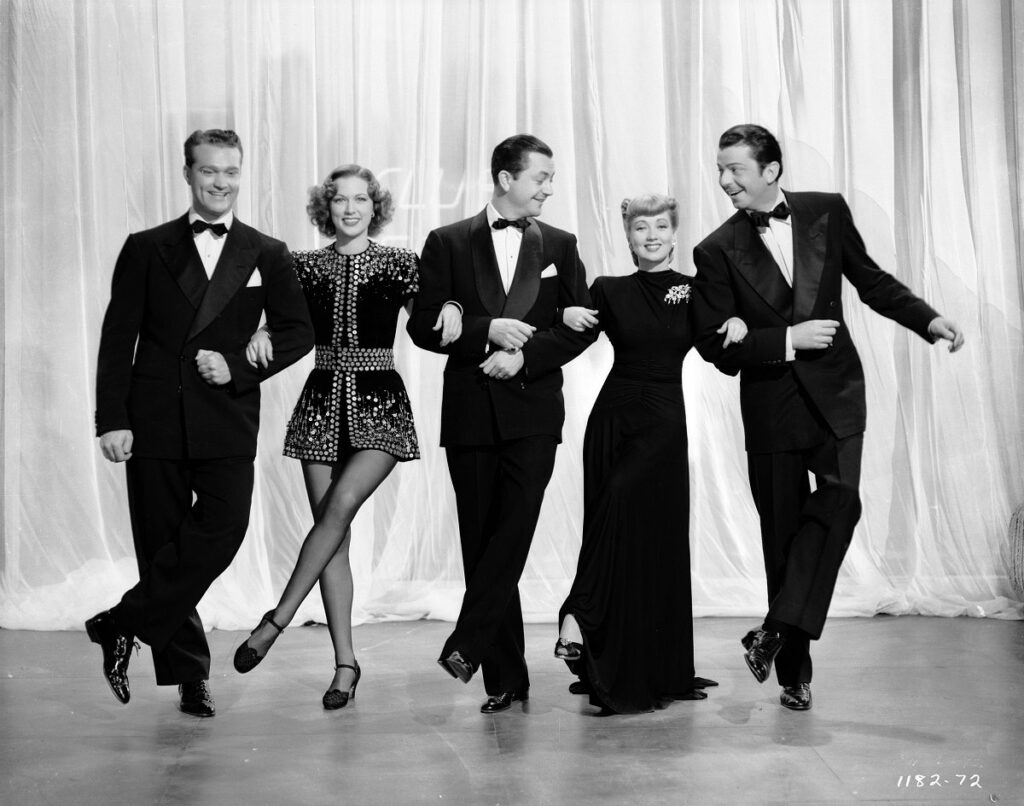
Lady Be Good (1941) The on-again-off-again love affair between composer Eddie Crane (Robert Young) and his songwriter wife Dixie Donegan (Ann Sothern). They marry, get divorced and keep joining up to write popular songs and pine for each other. Eleanor Powell plays Broadway star Marilyn Marsh, Dixie’s best friend who keeps scheming to bring them together for keeps. The choreography is by the visionary Busby Berkeley and Powell outdoes herself in two spectacular numbers. One, in which she rehearses at home, kicking the carpets aside and tap dancing with the pet dog, sometimes while doing cartwheels. It’s perfection. The other is during the finale to “Fascinating Rhythm,” proceeded by the phenomenal Berry Brothers. She dons a man’s tuxedo and taps up a storm. At the end of the number she’s flung over and under by a long line of chorus boys and still manages to land on her feet before the camera with a dazzling 100-watt smile.
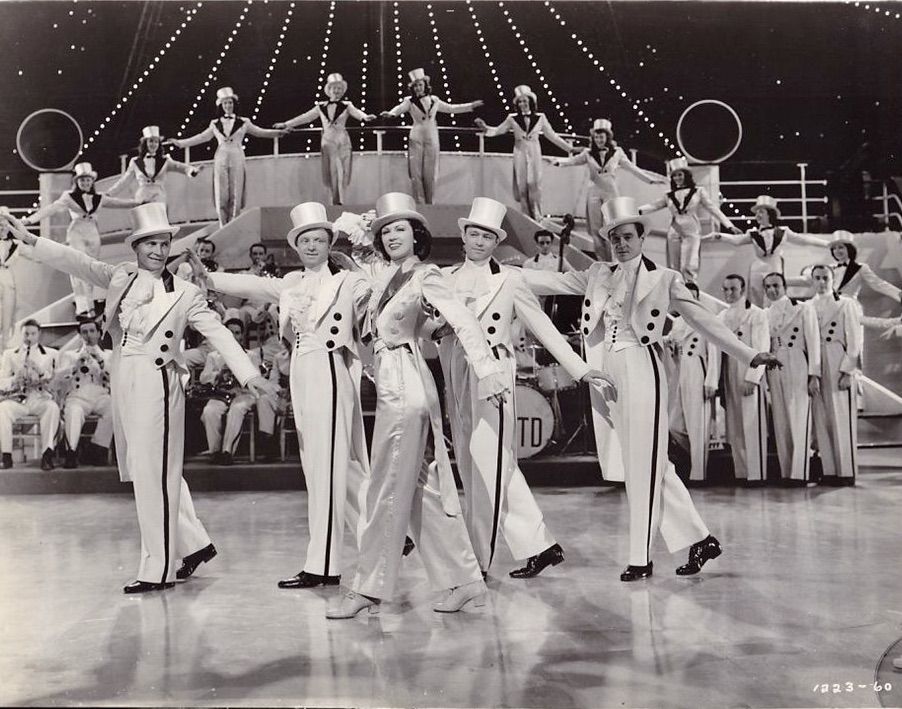
Ship Ahoy (1942) The film opens with Tommy Dorsey and his orchestra (with the amazing Buddy Rich on drums) accompanying dancer Tallulah Winters (Eleanor Powell) while she does a furious tap dance version of the Hawaiian War Chant. Phony government agents ask Tallulah to smuggle a powerful magnet mine to Puerto Rican with the band. “I feel like Mata Hari- I hope I don’t end up like her,” she says. Bert Lahr plays “Skip” Owens, a fan of deadpan band singer Fran Evans (Virginia O’ Brien). Ghastly Red Skelton plays Merton K. Kibble, a major hypochondriac who writes pulp spy stories. He gets tricked to go by boat to Puerto Rico with “Skip,” and meets beautiful Tallulah onboard. An incredibly young Frank Sinatra sings with the Tommy Dorsey Orchestra “The Last Call for Love” and “Poor You.” When Tallulah overhears the plot of Merton’s latest thriller she fears he is really talking about her and then their bags get switched with the top-secret device inside. Powell performs an energetic, wildly acrobatic tap dance on ship accompanied by Buddy Rich on drums. Later she performs a breakneck dance in a toreador outfit that boggles the mind.
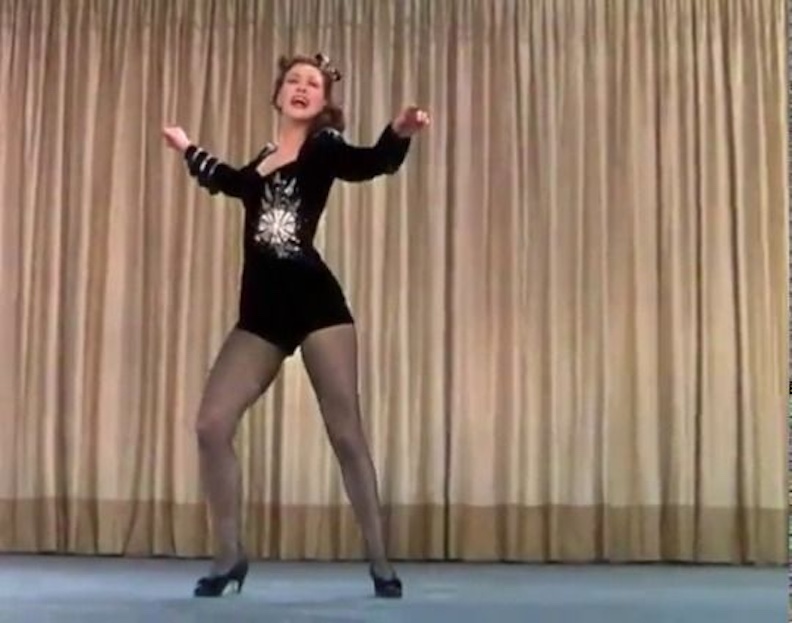
Thousands Cheer (1943) A wartime morale booster with a flimsy plot about an Army Colonel’s (John Boles) operatic daughter (Kathryn Grayson) traveling with her dad to sing for the troops who meets and falls for Private Eddie Marsh (Gene Kelly), who comes from a family of circus acrobats. It’s an excuse to showcase a parade of MGM stars doing skits and songs. Lena Horne, Mickey Rooney, Judy Garland, Lucille Ball, Ann Sothern, etc. You have to plod through 1 hour and 15 minutes before you get to see the divine Eleanor Powell who does a glorious boogie woogie tap number on stage for the soldiers.
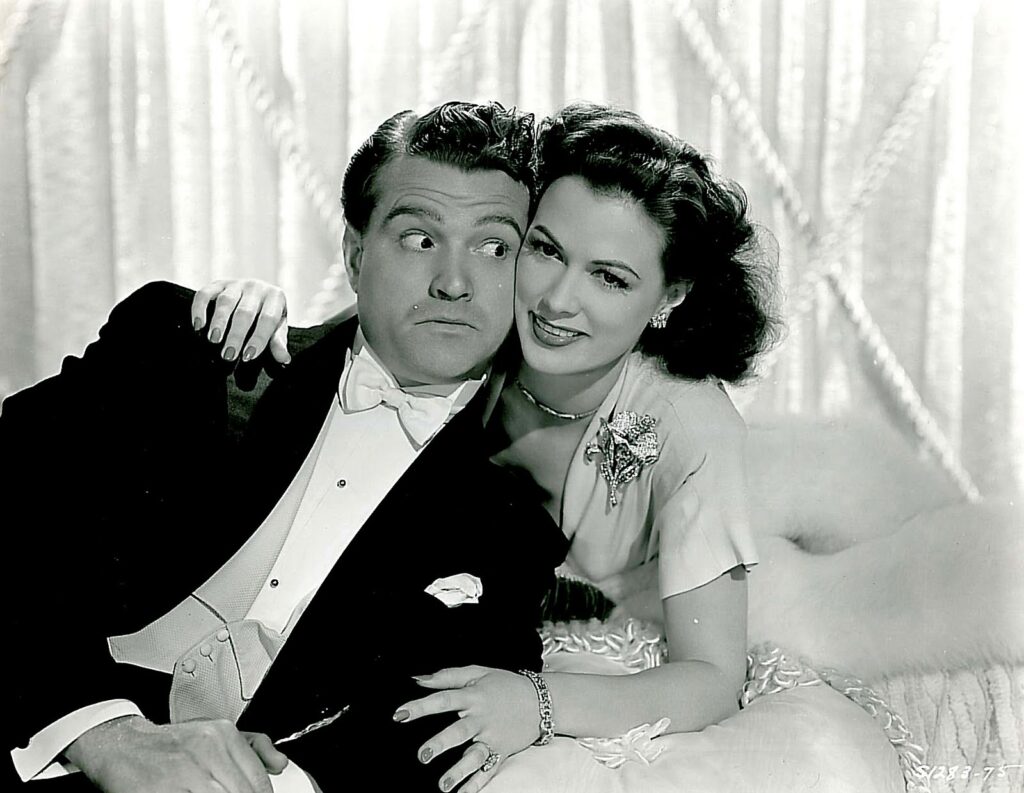
I Dood It (1943) I swore I would never see this movie because Red Skelton was the star, but I braved it for Eleanor’s sake. Eleanor plays Broadway and film star Constance Shaw. We see her do a wild western rope dance for the USO benefit. Fed up with her fiancé fooling around she decides to get revenge by impulsively marrying her biggest, and most annoying, fan- pants presser Joe Reynolds (Red Skelton). Joe accidentally foils a Nazi plot to blow up a war surplus warehouse and becomes a hero. Fortunately, there are lots of sparkling musical sequences from band leader Jimmy Dorsey, Hazel Scott and Lena Horne. Several of Powell’s dance numbers are recycled from other films.
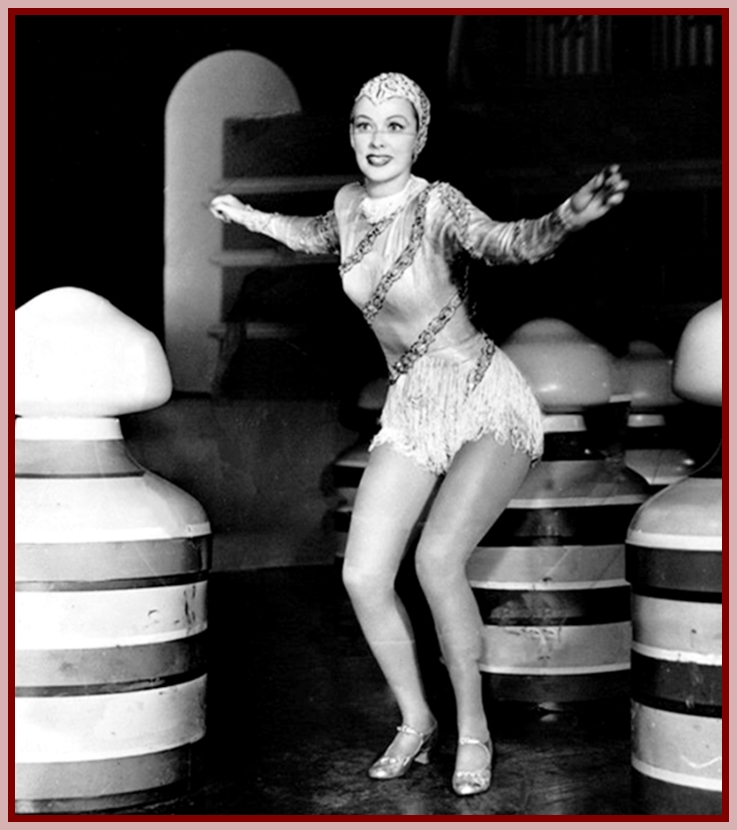
Sensations of 1945 (1944) was about a Broadway publicity firm, an ambitious entertainer (Eleanor Powell) who is put at the helm of the agency by the boss (Eugene Pallette), and the boss’s son (Dennis O’Keefe) who take a dim view of her wild publicity stunts but is in love with her. It’s mostly an excuse for a variety of specialty acts including W. C. Fields, Cab Calloway, Sophie Tucker, the Woody Herman Orchestra and even a dancing horse. Eleanor Powell (a vision in spangled white) does a great dance number in a giant pinball machine.
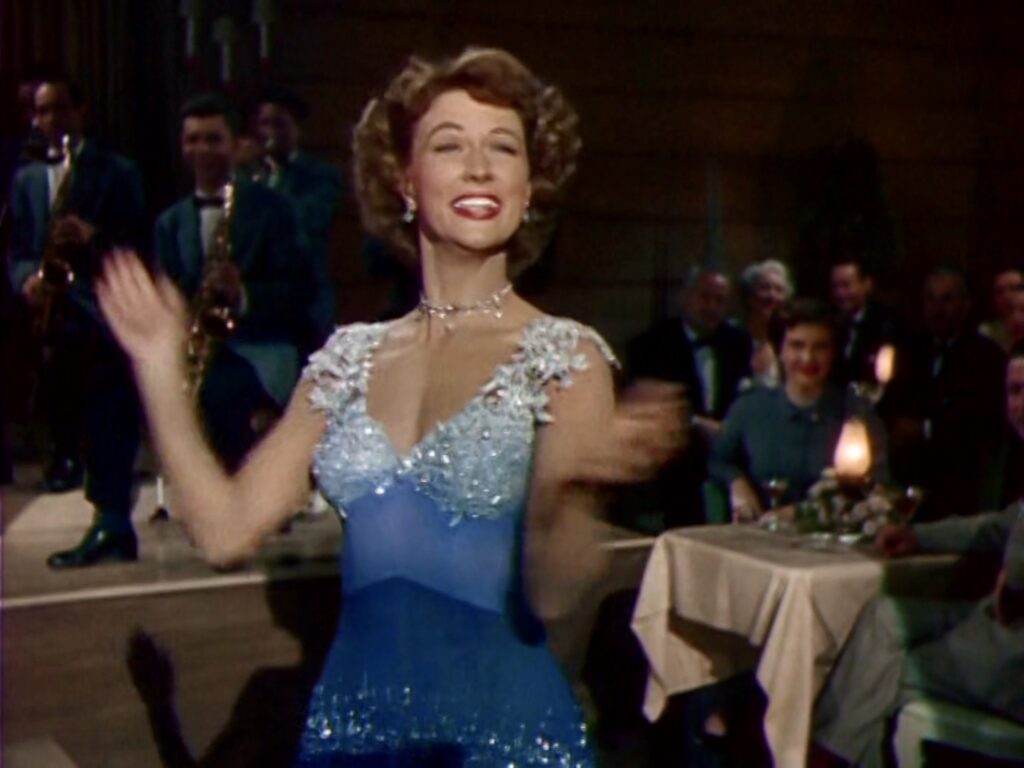
Duchess of Idaho (1950) Eleanor Powell makes a guest appearance in her last feature film which is basically another lightweight Esther Williams romantic comedy. Set mostly in Sun Valley where Esther plays Christine Duncan, on a covert mission to manipulate wealthy playboy Douglas Morrison Jr. (John Lund) for her best friend Ellen (Paula Raymond) (who is his secretary and hopelessly in love with him). Van Johnson plays band leader Dick Layn who complicates matters by falling for Christine (Esther). During a nightclub show Dick introduces Eleanor Powell (playing herself) in the audience and coaxes her to dance for the crowd. She starts off slowly and gracefully (almost ballroom dancing) but Dick chides her, “Go to work- do something,“ and Eleanor tears off her top dress and then goes into a furious tap dance routine that is a show-stopper. Esther Williams was in awe of Powell, who supposedly rehearsed until her feet were bleeding to make sure the routine was perfect. That’s a bittersweet number to watch with the realization “that’s all folks.”

What’s interesting to me is that when I was younger I had little interest in MGM films, and especially the musicals. I don’t remember when that changed but suddenly it was as if a light went off in my head and I suddenly “got it.” Those Technicolor musical confections suddenly amused me to no end. And it was a chance to watch these incredible dancers and revel in amazing choreographed numbers. The electric athleticism of Gene Kelly, the sunny inventiveness of Ann Miller, the ecstatic elegance of Cyd Charisse. And so on. But Eleanor Powell is in a class by herself. Watching her dance is transporting. She makes it look so effortless and there is this giddy smile on her face as if she is having the best time, despite what must have been weeks of grueling rehearsals.
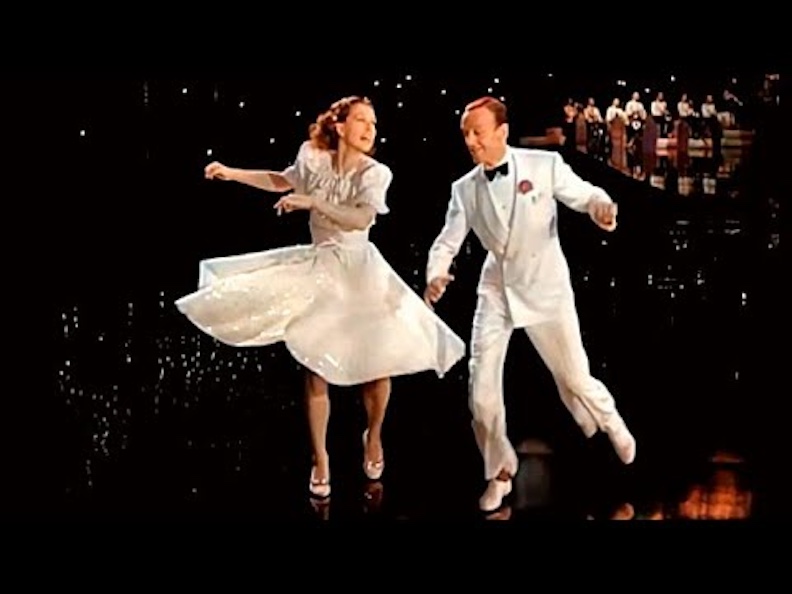
I always get disheartened talking to young film students who basically don’t know any films made before they were born. Or have any interest in them. When I gave my life over to my love of movies I couldn’t get enough. I wanted to see and experience everything- from silent movies on. And to this day I’m still finding new genres, actors and directors to obsess over. But revisiting the sublime Eleanor Powell’s films (especially finally tracking down ones I hadn’t seen) reminded me all over again the joy and orgasmic pleasure movies can bring.


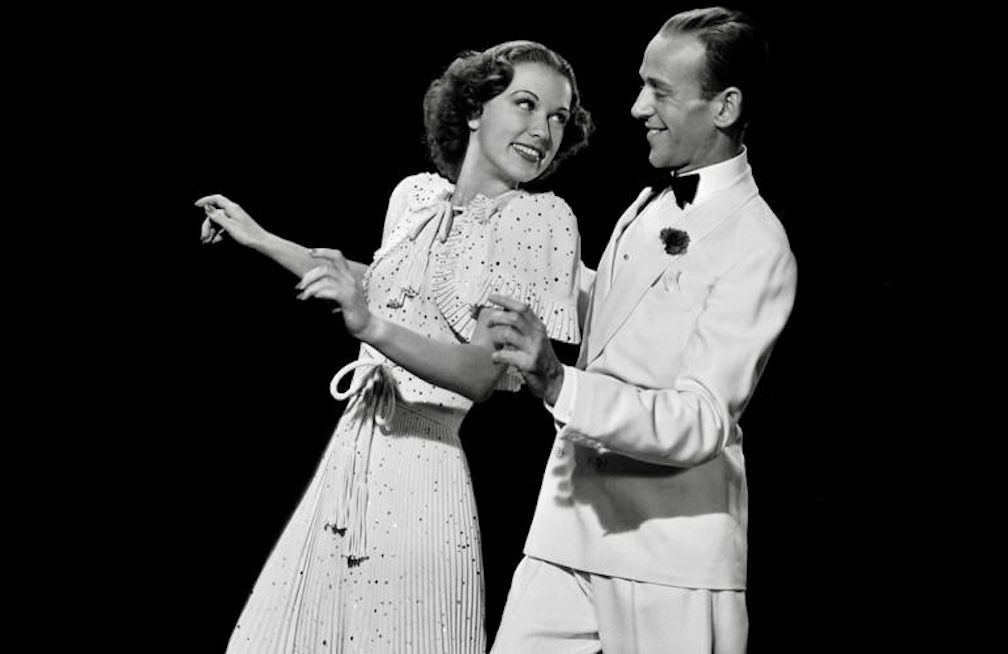
I love her, and You are such a great film historian!
You are the best, Dennis! Great article! Makes me want to dance again.
Just saw Born to Dance and went crazy. The number in the park and that finale Wow! Thank you for this one Dennis!
Amen
Born to Dsnce is jaw-dropping revelation